44 nutrient content claims on food labels
Nutrient Content Claim vs Health Claim - LabelCalc Nutrient content claims, which are commonly used on food labels, either refer to the amount of a nutrient in a product or compare the levels of a nutrient in that food to a similar reference food. When referring to the amount of a nutrient in a product, words such as "low," "free," and "high" are often used. eCFR :: 21 CFR 101.10 -- Nutrition labeling of restaurant foods whose ... § 101.10 Nutrition labeling of restaurant foods whose labels or labeling bear nutrient content claims or health claims. Nutrition labeling in accordance with § 101.9 shall be provided upon request for any restaurant food or meal for which a nutrient content claim (as defined in § 101.13 or in subpart D of this part) or a health claim (as defined in § 101.14 and permitted by a regulation in ...
how to understand food labels - Eat For Health Don’t rely on health claims on labels as your guide. Instead learn a few simple label reading tips to choose healthy foods and drinks, for yourself. You can also use the label to help you lose weight by limiting foods that are high in energy per serve. 100g Column and Serving Size If comparing nutrients in similar food products use the per 100g column. If calculating how much …
Nutrient content claims on food labels
› understanding-food-labelsUnderstanding food labels - Canada.ca Find information on food labels and how to understand them. Learn about nutrition facts tables, serving size, list of ingredients, % daily value and nutrition claims. 13 Misleading Food Label Claims and How Not to Be Tricked 20/10/2021 · Unfortunately, food labels frequently use carefully crafted language that attracts and misleads consumers as a sales tactic. During the ongoing COVID-19 pandemic, consumers’ interest in healthful eating has increased.In addition to growing interest in gut health and eating for mental health, consumers are choosing more plant-based foods, helping plant-based eating … CFR - Code of Federal Regulations Title 21 - Food and Drug … 29/03/2022 · A claim about the calorie or sugar content of a food may only be made on the label or in the labeling of a food if: (1) The claim uses one of the terms defined in this section in accordance with the definition for that term; (2) The claim is made in accordance with the general requirements for nutrient content claims in § 101.13; (3) The food for which the claim is …
Nutrient content claims on food labels. Making a nutrient content claim on food labels - Food labels - Canadian ... Claims made on foods prohibited from showing a nutrition facts table In some cases, nutrient content claims are found on foods that hold exemptions or prohibitions from showing a Nutrition Facts table. Making a claim on these products triggers certain labelling requirements: Products not required to show the nutrition facts table Nutrition claims - Food Safety A claim that a food is a source of omega-3 fatty acids, and any claim likely to have the same meaning for the consumer, may only be made where the product contains at least 0,3 g alpha-linolenic acid per 100g and per 100kcal, or at least 40mg of the sum of eicosapentaenoic acid and docosahexaenoic acid per 100g and per 100kcal. Label Claims for Food & Dietary Supplements | FDA 07/03/2022 · Health claims, nutrient content claims, and structure/function claims used on food and dietary supplement labels. Nutrient Claims on Food Labels - Truly Good Foods Nutrient Claims on Food Labels July 19, 2018 Nutrient claims describe the content of a food, including the amount of nutrients, calories, cholesterol or fiber, but not in exact amounts. Usually on the front of the food label, the nutrient claim provides a quick comparison between similar products.
Nutrient Claims on Food Labels - Food Smart Colorado Nutrient content claims describe a food and the level of a particular nutrient in that ... How to read food labels | healthdirect Sugar: Sugar is a type of carbohydrate. It is better to choose healthier carbohydrates and to limit foods that are high in added sugars. Fibre: High fibre foods such as wholegrain bread and cereals improve digestion and help you to feel full. Sodium: This tells you how much salt the product contains. Eating too much salt is linked to high blood pressure and can lead to heart disease, … Nutrient content claims - Canadian Food Inspection Agency Advertisements making vitamin and mineral nutrient content claims; Decision trees for nutrient content claim advertising requirements; Reference information. Foods to which vitamins, mineral nutrients and amino acids may or must be added; Nutrient content claim examples; Additional Information. Criteria for the nutrient content claim no added ... › en › health-canadaNutrient content claims: what they mean - Canada.ca Table of nutrient-content claims and what they mean; Keywords What it means Nutrients Used With / Nutrient Criteria; Free No 0 Zero Without: The food provides an amount of a nutrient that is so small it likely won't have any effect on your body. Calories/Energy: Less than 5 Calories Footnote * Sodium/salt: Less than 5 mg Footnote * Fat: Less than 0.5 g fat Footnote *
Factual Food Labels: Health Claims - Master of Science in Nutritional ... This type of claim describes the nutritional content and nutrient levels of the food product in comparison to the accepted standard of the product. The terms that are used in this type of label is "free," "reduced," "high," and "low." These type of claims are only applicable to nutrients that have a % daily value established ... nutrient claims on food labels chapter 2 Flashcards | Quizlet nutrient claims on food labels chapter 2. STUDY. Flashcards. Learn. Write. Spell. Test. PLAY. Match. Gravity. Created by. carolinergriffin. Key Concepts: Terms in this set (41) claims on food labels. ... nutrient content claims. most important describe the level or amount of a nutrient in a food product. › scripts › cdrhCFR - Code of Federal Regulations Title 21 - Food and Drug ... Mar 29, 2022 · (b) Label statements that are not implied claims. Certain label statements about the nature of a product are not nutrient content claims unless such statements are made in a context that would make them an implied claim under § 101.13(b)(2). The following types of label statements are generally not implied nutrient content claims and, as such ... eCFR :: 21 CFR 101.54 -- Nutrient content claims for "good source ... A nutrient content claim that characterizes the level of antioxidant nutrients present in a food may be used on the label or in the labeling of that food when: ( 1) An RDI has been established for each of the nutrients;
Nutritionist Pro™ | Nutrition Food Labels Nutrient Content Claims. See if your food item qualifies for any nutrient claims such as Low Fat, Sugar Free or more. Ingredient list and Allergens — Easily identify and update ingredient list or allergens present in foods. Nutrient % and Rounding Rules — Label displays both unit (g, mg, mcg) values and % as required by regulations.
Nutrient Content Claims on a Food Label - LabelCalc As previously covered in part one of our claims series, a nutrient content claim can be defined as a claim that speaks (directly or indirectly through implication) to the level of a nutrient contained within a food. These claims specifically refer to the actual nutrient content that is displayed on the nutrition facts panel.
Status of Nutrition Labeling, Health Claims, and Nutrient Content ... Abstract. The Food and Drug Administration (FDA) conducts studies of food labels as part of its ongoing monitoring of the nutritional status of the US population. In 1994 FDA nutrition labeling rules were implemented and in 1997 the Food Label and Package Survey characterized various aspects of the labeling of processed, packaged foods, including nutrition labeling, health claims, and nutrient content claims.
FDA Regulatory Requirements for Nutrient Content Claims When a claim is made on a food that contains more than 13 g total fat, 4 g saturated fat, 60 mg cholesterol, or 480 mg sodium per RACC, per labeled serving, or, for foods with small RACC, per 50 g, a disclosure statement is required as part of claim (i.e., "See nutrition information for ___ content" with the blank filled in with nutrient(s) that exceed the prescribed levels).
Nutrient Content - an overview | ScienceDirect Topics Nutrient content claims are statements on the labels of foods, food products and dietary supplements that describe the amounts of nutrients or dietary substances in these products. The US FDA establishes the requirements and regulates the compliance of nutrient content claims.
Understanding food labels - Canada.ca Find information on food labels and how to understand them. Learn about nutrition facts tables, serving size, list of ingredients, % daily value and nutrition claims. Find information on food labels and how to understand them. Learn about nutrition facts tables, serving size, list of ingredients, % daily value and nutrition claims. Skip to main content; Skip to "About …
› food › food-labeling-nutritionLabel Claims for Food & Dietary Supplements | FDA Among the claims that can be used on food and dietary supplement labels are three categories of claims that are defined by statute and/or FDA regulations: health claims, nutrient content claims,...
Nutrition content claims and health claims - Food Standards Nutrition content claims. Nutrition content claims are about the content of certain nutrients or substances in a food, such as 'low in fat' or 'good source of calcium'. These claims need to meet certain criteria. For example, food with a 'good source of calcium' claim needs to contain at least the amount of calcium specified in the Standard. Health claims
Regulating health claims on food labels using nutrient ... - PubMed Objective: Proposed Australian regulation of claims on food labels includes requirements for products carrying a health claim to meet nutrient profiling criteria. This would not apply to nutrition content claims. The present study investigated the number and healthiness of products carrying claims and the impact of the proposed regulation.
Understanding Food Labels - Nutrition: Science and Everyday Application ... The value printed on the Nutrition Facts panel is the percent DV, which tells you how much one serving of the food contributes towards meeting the daily requirement for that nutrient. The FDA uses the following definitions for interpreting the %DV on food labels:4. 5%DV or less means the food is low in a nutrient.
Nutrient Claims on Food Labels - Clemson University The NLEA permits the use of label claims that describe the level of a nutrient in a food ...
› food › food-labeling-nutritionLabel Claims for Conventional Foods and Dietary Supplements Mar 07, 2022 · Among the claims that can be used on food and dietary supplement labels are three categories of claims that are defined by statute and/or FDA regulations: health claims, nutrient content claims ...

Avoid the dairy - the alternatives are amazing! | Seize the day with Team Reid, powered by Juice ...
Label Claims for Conventional Foods and Dietary Supplements 07/03/2022 · Among the claims that can be used on food and dietary supplement labels are three categories of claims that are defined by statute and/or FDA regulations: health claims, nutrient content claims ...
5 Understanding Food Labels and Health Claims - Maricopa The Food label. The Nutrition Labeling and Education Act made it a law that foods sold in ...
Nutrient Content Claims | FDA - U.S. Food and Drug Administration Nutrient Content Claims. See Claims That Can Be Made for Conventional Foods and Dietary Supplements for definitions of claims. Final Rule: Food Labeling: Nutrient Content Claims; Alpha-Linolenic ...
Understanding Food Labels | The Nutrition Source | Harvard T.H. Chan ... Nutrient content claims These statements describe the nutrients in a food beyond what is listed on the Nutrition Facts label, intended to showcase a health benefit of the food. An example is "Contains 100% Vitamin C."

Factual Food Labels: Health Claims - UT Austin 100% Online Master of Science in Nutritional Science
sentientmedia.org › misleading-food-labels13 Misleading Food Label Claims and How Not to Be Tricked Oct 20, 2021 · The Food and Drug Administration (FDA) provides guidelines for a variety of common food labels, including sugar-free. While the term suggests that products labeled this way would be completely free of sugar, they can actually contain up to 0.5 grams of sugar in a single serving size.
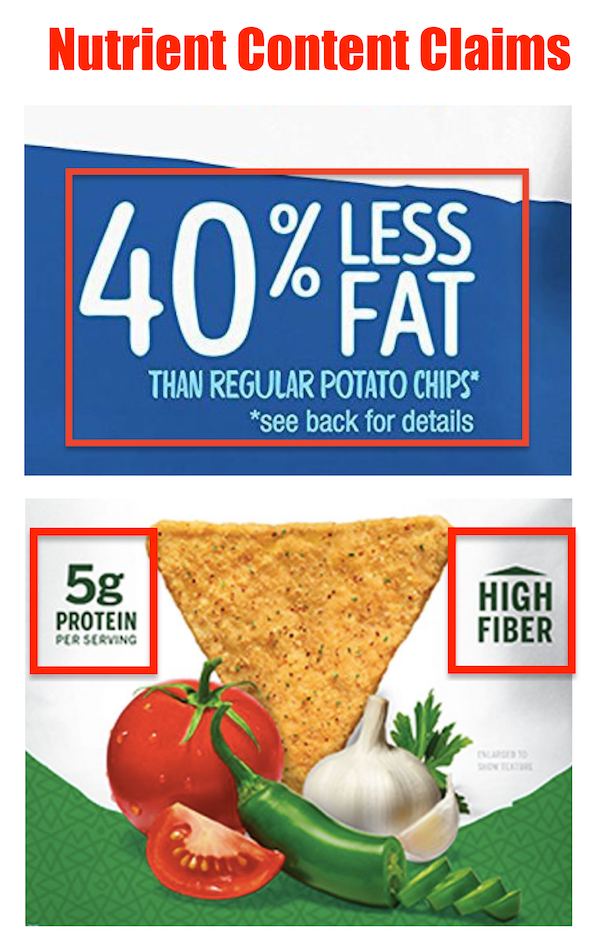
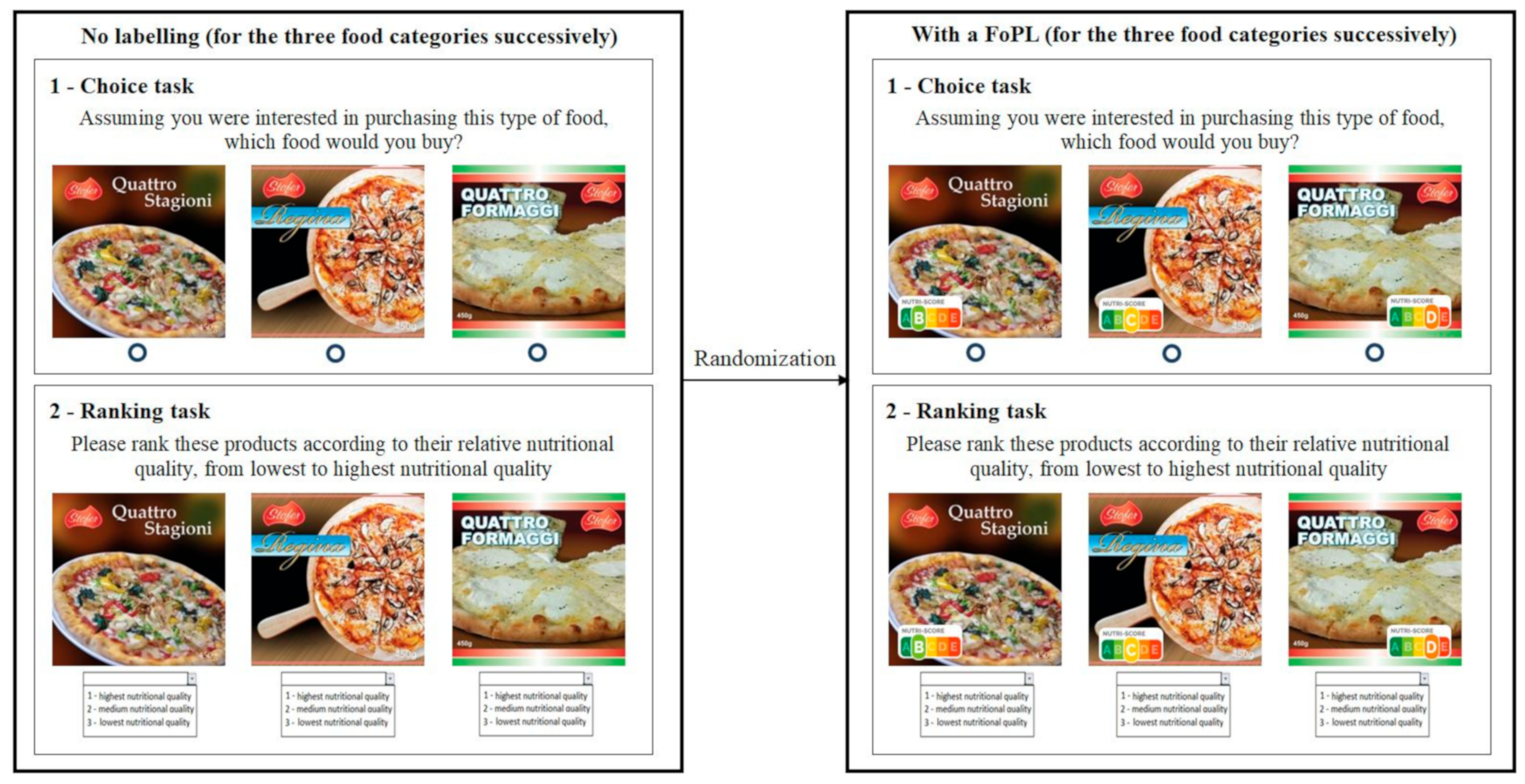
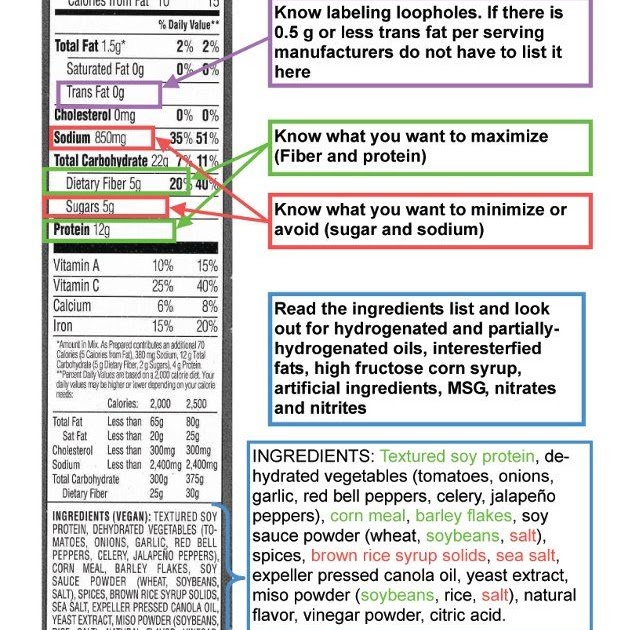
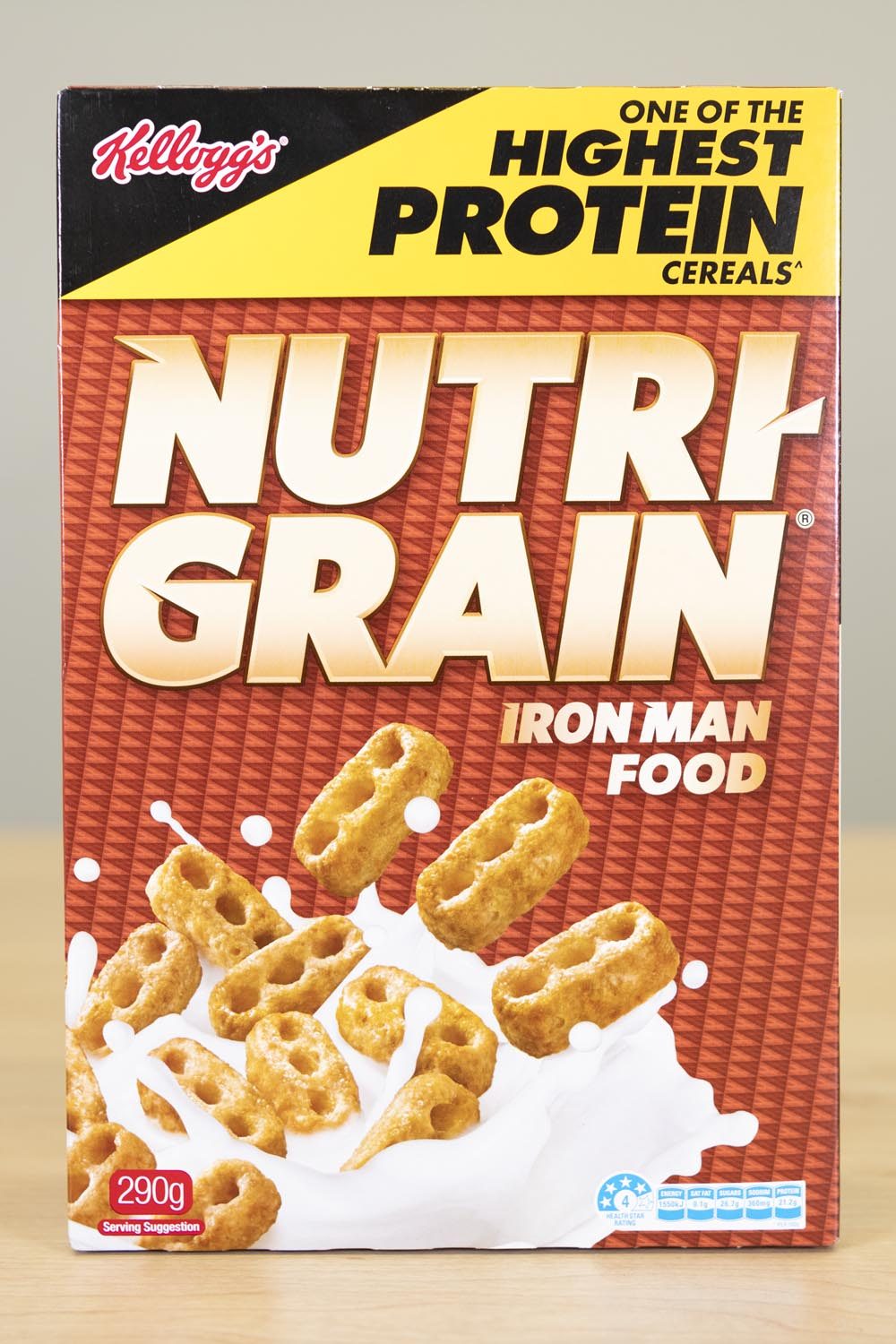

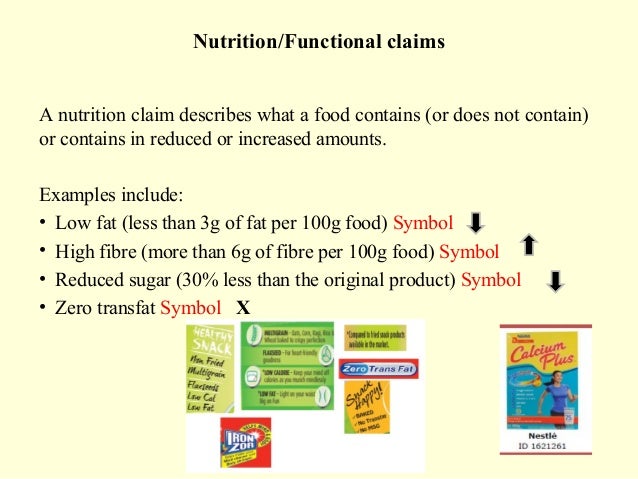
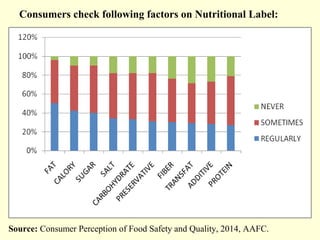

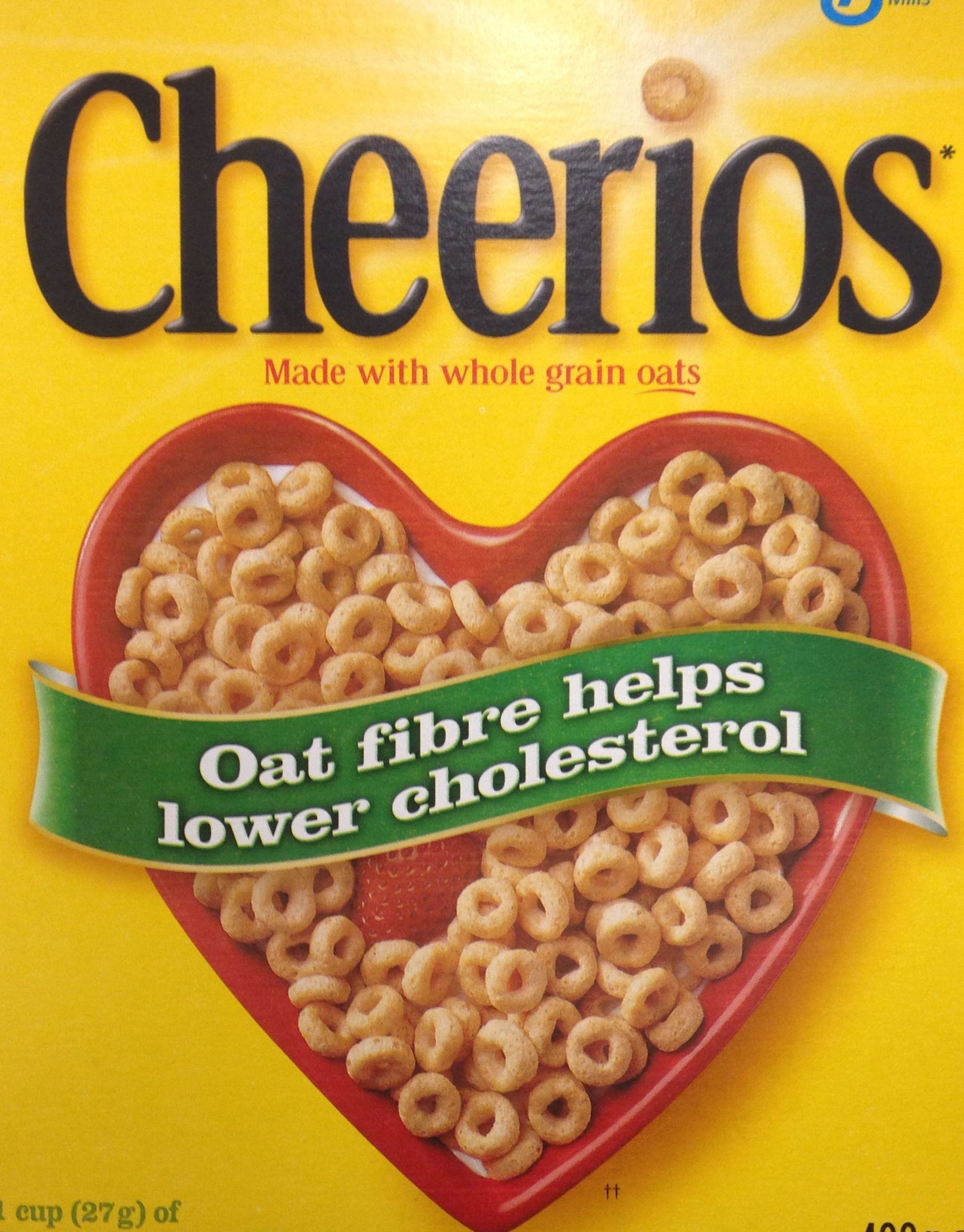
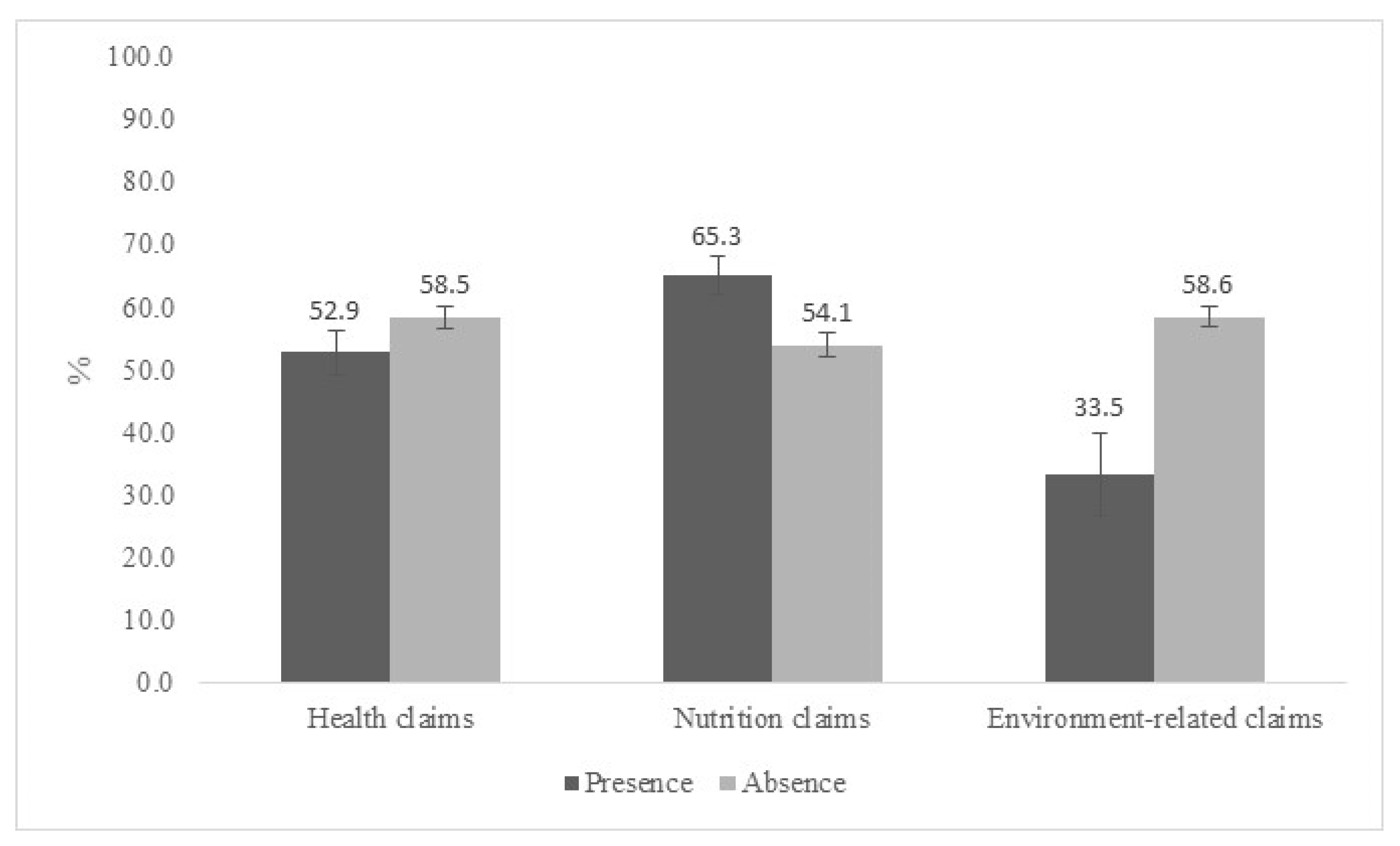


Post a Comment for "44 nutrient content claims on food labels"